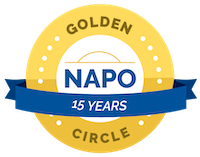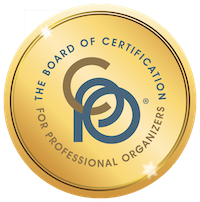"The simplest time management method"
I’ve written here before about my love of Mark Forster’s book Do It Tomorrow and Other Secrets of Time Management (there’s a link to the book on the right hand column of my blog). For at least a year now, I’ve been working on integrating elements of his system into my life. One of those elements is to create a “will-do” list of tasks that I actually expect to accomplish on a given day. These are individual tasks, as well as daily tasks like responding to yesterday’s email, voicemail and snail mail.
I’d been keeping my list of tasks in a daily task diary, a page-a-day bound calendar. It takes real skill to determine how much I can actually accomplish in a day and the fact of the matter is that I was not always successful. In fact, I was unsuccessful more often than not. Those tasks that weren’t checked off were, in theory, moved to the next day’s page. But sometimes I’d turn the page without moving them and they’d languish in the past. Occasionally, I’d thumb through past days, rounding up tasks that never got accomplished. Clearly, I wasn’t working the system perfectly.
One of the things I like about a daily list is that I avoid creating an endless, daunting, to-do list that was never fully checked off. Nor was it prioritized. Mark Forster himself has come up with what feels like a great solution to this problem.
In a recent blog post, The Simplest Time Management Method, Mark outlined another way to handle a to-do list. Here’s how it goes: On a ruled pad, start a list. When you come to the end of it, draw a line on the bottom. Then start doing everything on the list, in whatever order you want. When new tasks come to mind, write them beneath the line. Here’s the key: don’t allow yourself to do any of those new tasks until you’ve done everything above the line. When you’ve check all the above-the-line tasks off, then draw a line below the new list and get started on it. Rinse and repeat.
I have to admit I couldn’t really get my mind around the benefits of this method at first glance. Then I read the conversation in the comments to that post (which include input from Mark), as well as a discussion of the new method in the discussion forum on Mark’s website and I decided to give it a try.
About a week into it, I’m loving it. I find that not being able to do the stuff below the line makes me want to do them. So when I finish above the line, I’m anxious to dive into the new list. Also, it provides accountability. I realize that for the first time ever, writing something down means it will actually get done. I find myself hesitating to write things down, thinking to myself, “I’m going to have to actually do them.” That makes me question whether I actually want to do that task. So far the answer has been yes, but I can see it as a great screening tool, allowing me to eliminate unimportant things from the list.
I don’t know if this makes any sense. But if your way of handling to-do lists isn’t working well for you, I urge you to read Mark’s blog post and give it a try. It’s had an amazingly motivating effect on me. Maybe it will for you too.
Tagged with: mark forster, motivation, time management
Comments
Forster suggests keeping a project list for long-term projects that don’t have deadlines and working on one a time, moving tasks for the current project (or “current initiative” in his parlance) onto the daily to-do list. That might work for you!
Janine Adams December 3, 2008 04:49 PM
Links
- Metropolitan Organizing
- Ravelry
- Institute for Challenging Disorganization
- Shannon Wilkinson, life coach
- NAPO St. Louis
- National Association of Productivity and Organizing Professionals
- Getting to Good Enough podcast
- Organize Your Family History
- Are you interested in becoming a professional organizer?







Hm. This sounds like an interesting approach. The problem I can foresee is that I’m always thinking of “long-term” things I want to accomplish, and they wouldn’t have a place on this list. On the flip side, though, I’d keep my real to-do list uncluttered with lofty goals.
Nora Brown December 3, 2008 04:44 PM